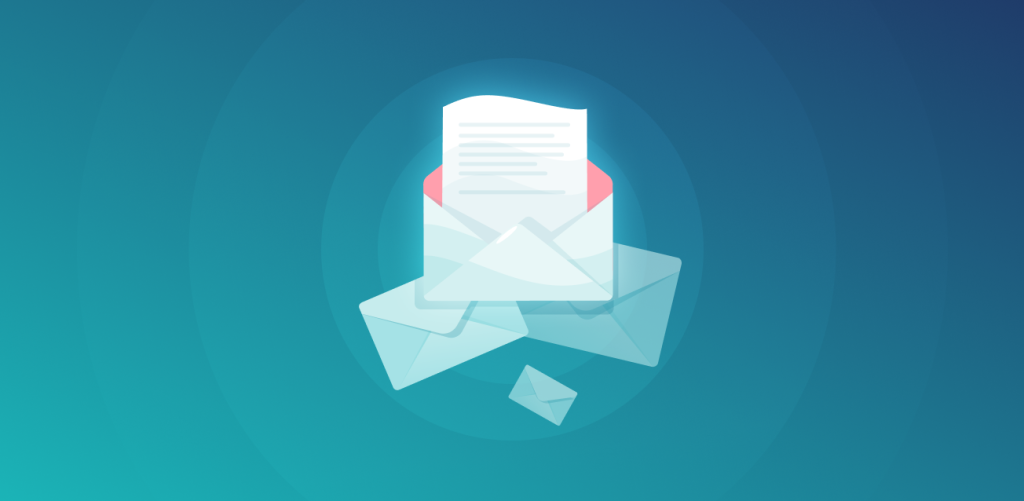
The perfect number of emails a person should have depends on their individual needs and preferences, but it’s a good idea to have at least three: one for personal use, one for professional purposes, and an additional one for all of life’s what-ifs.
Table of contents
Understanding different types of email accounts
Many of us use different email accounts for different purposes. Let’s examine the three most common types of email accounts.
Personal email
Think of this primary email account as the inner child — innocent, safe, and yet to be exposed to the dark side of the internet. This account should only send and receive:
- Personal communications with friends and family;
- Non-work-related communication with colleagues;
- Holiday/birthday cards and messages;
- Pictures and videos between family.
Should your personal email account be used for social media? It shouldn’t.
Avoid signing up for any account at all with your personal email. Then, if spam does creep its way in, you can spot it immediately.
Professional/work email
The following account is separated entirely from your personal email. Let’s call this one the professional. Dedicate this primary email account to all “official” communications, including:
- E-commerce or business account;
- Correspondence with school;
- Government accounts (e.g., taxes, healthcare, voting, etc.);
- Interaction with law enforcement.
When we have different emails to use for professional purposes, emails not related to official business are most likely spam.
Additional categories
While the two account types previously mentioned can cover most of your needs, there are some additional types to consider. For the sake of our metaphor, let’s call these the teenager and the accountant.
- The teenager: this account surfs the web with relative ignorance, signing up for subscriptions and social media, and always seems to be online shopping. Don’t be surprised to find plenty of “junk” in this account’s spam folder.
- The accountant: all of your sensitive data, like banking and credit cards, passes through here. You can even open different emails to use for each sensitive application. Avoid using an Apple Mail or Gmail account for this purpose. Opt for a more professional and encrypted option like Proton Mail.
Of course, you can have as many burner email accounts as you like, especially when signing up for an account on a site you don’t trust yet.
Benefits of having multiple email accounts
You might say, “I have one email that does all of this, and it works just fine. Should I have multiple emails?” Here are the most significant benefits of separate email accounts.
Organization and segmentation
Whether you receive 2 or 200 emails daily, you can benefit from organizing and segmenting your emails. Here’s how:
- Separate professional and personal communications;
- Move important work communications to your priority inbox;
- Enhance workflow with separate folders;
- Avoid distractions while at work/home;
- Appear professional in brand emails and business communication.
Enhanced security
Using multiple email addresses can greatly improve control over your personal information online. An alternative email service lets you generate alias email addresses that help protect your identity and keep your online activities separate. Since the alias forwards all messages to your primary inbox, filtering and isolating them is easier, and so is identifying any phishing and scamming attempts you might encounter.
Better work-life balance
This one is for the workaholics in the chat — dedicated email account types promote a clear separation between home life and your incessant work mania. Claim a better work-life balance through email organization:
- Avoid checking your professional emails at home, and leave work at work;
- Ease the symptoms of work-related stress;
- Decrease the likelihood of distractions while working.
When we divide our communications across multiple email accounts, a greater work-life balance is more achievable.
Potential downsides of multiple email accounts
Managing different email accounts for different purposes can get tricky. Let’s discuss a couple of downsides to owning and operating multiple email accounts.
Complexity and management
When you use several emails, managing them becomes complicated. Regularly checking your various inboxes and junk folders is simply unmanageable. The tasks are endless:
- Checking inboxes, categorizing the important, less-important, and junk emails;
- Monitoring for data leaks and phishing attempts;
- Remembering the passwords to every one of your email accounts.
Need a better way to manage your online shopping accounts? Alternative ID stores up to three teenager-type email accounts. Hunt the web for discounts, sales, and special offers without the downside of spam in your personal inbox.
Increased spam and security risks
Wait a minute, didn’t you say that multiple email accounts improve my online security? Yes and no. If done right, most of your emails should remain secure and unadulterated by daily spam. However, with each dedicated email account comes an extra entry point.
Every account adds to your attack surface: any possible access points into your system.
If you know you might receive spam, create a temporary email and identity. With Alternative ID, you can generate multiple accounts without increasing the risks.
How to decide the right number of email accounts
But seriously, how many emails should I have? First, you should assess your needs and situation, and then you can streamline and consolidate your email addresses.
Assess your needs
The number of email accounts you manage depends on your personal and professional requirements. Some jobs and lifestyles require an extra layer of privacy and security – feel free to create a secure email for that alone.
Regardless of your lifestyle, everyone should have three basic email types: personal, professional, and additional. Some may need four different business email accounts, while others might barely use the one they have.
Your perfect number of email accounts is unique to you. However, it’s always better to have an extra email account than one too few.
Tailor to your needs
Let’s take a look at some real-life examples:
- Are you a remote worker? In addition to your personal, professional, and sensitive email accounts, consider a set of throwaway accounts for public Wi-Fi and co-working spaces.
- Does your small business need a security makeover? Designate a primary email address for client communications and handle financials on a separate, unlinked account.
- When you’re bored at school, do you surf the web? Browsing or signing up to dodgy sites with your school email can lead to a disastrous wide-scale breach. Set up a throwaway account to safeguard you and your classmates’ data.
Streamline and consolidate
Managing so many accounts is not recommended, as your attack surface will continue to grow. Yet, there will always be those who feel they need more than a dozen accounts for their various business and personal interests. Instead, try:
- Consolidating your accounts into three familiar types: personal, professional, and additional;
- Minimizing unnecessary email accounts that add to your attack surface;
- Streamlining your account operation through an email client.
If you still need more, aim for the minimum amount of accounts required.
Best practices for managing multiple email accounts
For some, the minimum amount of accounts might still be too many to handle. Luckily, we have some tips to manage multiple accounts more effectively.
Use email clients and apps
Manage, categorize, and consolidate your multiple accounts with a premium email client. The current industry trailblazers are:
- Microsoft Outlook: If it ain’t broke, don’t fix it – Outlook remains the classic choice among Windows users.
- Readdle Spark: handling hundreds of emails every day? Spark allows users of all platforms to rapidly sort, snooze, and delete emails.
- Mozilla Thunderbird: where are my open-source geeks? Thunderbird may not look like much on the outside, but it’s by far the most versatile and customizable.
Apply consistent naming conventions
Multiple email addresses are easier to remember and use with consistent naming conventions. The trick is picking a simple name structure.
If you’re creating an email to receive newsletters, try “john.smith.newsletter@domain.com.” Similarly, for shopping, you’d want to use “john.smith.shopping@domain.com.”
Naming conventions make remembering your emails accessible and intuitive. You’re also less likely to sign up for an account with the wrong email address.
Perform regular maintenance
The more those unread emails stack up, the harder it gets to sort them all. Over time, having different emails to use becomes tedious and frustrating. Instead, organize your emails with regular maintenance:
- Regularly review your inbox and junk folder.
- Set up filters and labels for your received and archived emails.
- Scan for spam and phishing emails to assess your account’s exposure.
- Back up essential emails.
- Unsubscribe from newsletters you no longer read.
Secure your email accounts
How can I protect my email account? Of course, this all depends on your day-to-day cyber hygiene. These principles include:
- Strong, obscure passwords (if you can remember them, they can’t be hard to crack!);
- Regularly review passwords;
- Network encryption with a VPN when checking emails in public.
- 2FA enabled on all eligible accounts.
- Up-to-date email client and OS.
Wrapping up: the perfect number of emails is up to you
Anyone — from office workers to media moguls — requires multiple emails for each part of their online life. The issue occurs when individuals manage too few or too many email accounts.
Limiting your accounts to personal, professional, and additional sub-categories allows for more effective email management and security. For the privacy buffs, Alternative ID keeps your spam folder clean, so you don’t have to.
FAQ
How many emails does the average person have?
As of 2022, data shows that 37% of users in the US manage 2 email addresses. Close behind, 28% of those surveyed say they manage over 4. How many emails you should have depends solely on how many distinct uses you have for them.
Should you use your real name in your email address?
On one side, using your real name in your email address evokes professionalism and transparency. However, cybercriminals can use personal identifying information to perform targeted cyberattacks. Use your real name with caution!
How many emails should I have in my inbox?
The simple answer is none. Adopt the Inbox Zero principle, organizing or deleting any emails that arrive. Not only does this boost your productivity, but it also makes it easier to spot potential phishing emails.
Can you have too many email addresses?
Unless you’re the CEO of multiple international organizations, the answer is probably yes; you can definitely have too many email accounts. Narrow your account types to the categories explained here to minimize the number of accounts you need to check every day.



